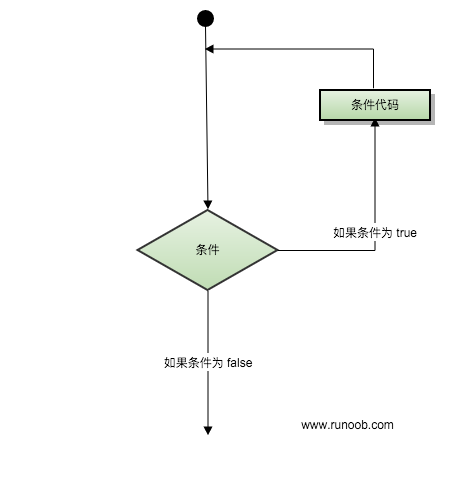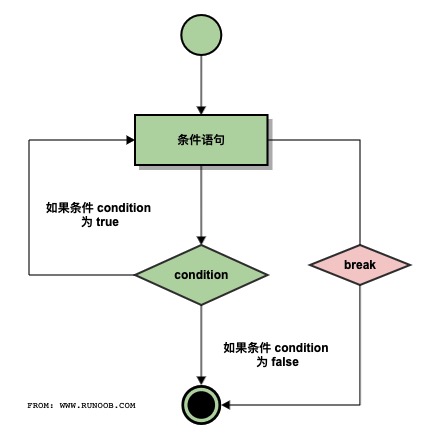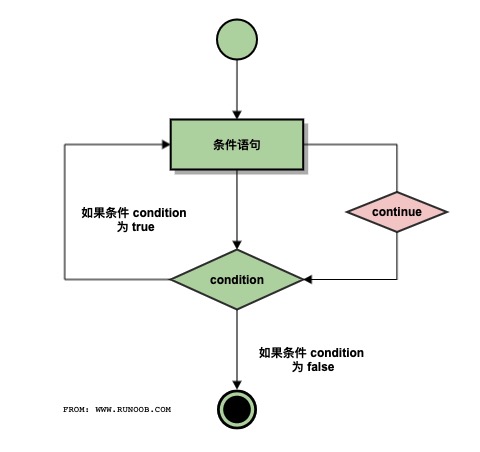循环语句
本章节将为大家介绍 Python 循环语句的使用。
Python 中的循环语句有 for 和 while。
Python 循环语句的控制结构图如下所示:

while 循环
while 循环是一种最基本的循环语句。
语法格式如下:
while 表达式:
语句表达式是一个布尔表达式,如果表达式为 True,则执行语句,否则跳过语句块,继续执行循环。
count = 0
while count < 5:
print(count)
count += 1输出:
0
1
2
3
4无限循环
如果 while 循环条件永远为 True,则循环将无限执行下去,称为无限循环。
count = 0
while True:
print(count)
count += 1
if count >= 5:
breakwhile 循环使用 else 语句
while 循环还可以使用 else 语句,该语句在循环正常执行完(即 while 表达式为 False)时执行。
count = 0
while count < 5:
print(count)
count += 1
else:
print("循环结束")输出:
0
1
2
3
4
循环结束for 循环
for 循环是一种迭代循环语句,可以遍历任何序列的元素。 语法格式如下:
for 变量 in 序列:
语句变量是循环过程中迭代的元素,序列可以是列表、元组、字符串、字典等。
fruits = ["apple", "banana", "orange"]
for fruit in fruits:
print(fruit)输出:
apple
banana
orangefor 循环使用 else 语句
for 循环还可以使用 else 语句,该语句在循环正常执行完(即 for 循环正常结束)时执行。遇到了 break 语句,则会中断循环,此时不会执行 else 子句。
fruits = ["apple", "banana", "orange"]
for fruit in fruits:
print(fruit)
else:
print("循环结束")输出:
apple
banana
orange
循环结束嵌套循环
for 循环可以嵌套,即一个 for 循环中包含另一个 for 循环。
for i in range(3):
for j in range(2):
print(i, j)输出:
0 0
0 1
1 0
1 1
2 0
2 1range() 函数
如果你需要遍历数字序列,可以使用内置 range() 函数。它会生成数列,例如:
for i in range(5):
print(i)输出:
0
1
2
3
4range() 函数可以接收三个参数,第一个参数指定开始值,第二个参数指定结束值(不包含),第三个参数指定步长。
for i in range(2, 10, 2):
print(i)输出:
2
4
6
8break 语句
break 语句可以提前结束循环。
for i in range(5):
if i == 3:
break
print(i)输出:
0
1
2break,continue 语句和循环中的 else 语句
break 执行流程图:

continue 执行流程图:

break 语句可以跳出 for 和 while 的循环体。如果你从 for 或 while 循环中终止,任何对应的循环 else 块将不执行。
continue 语句被用来告诉 Python 跳过当前循环块中的剩余语句,然后继续进行下一轮循环。
pass 语句
pass 语句什么都不做,一般用做占位语句。
